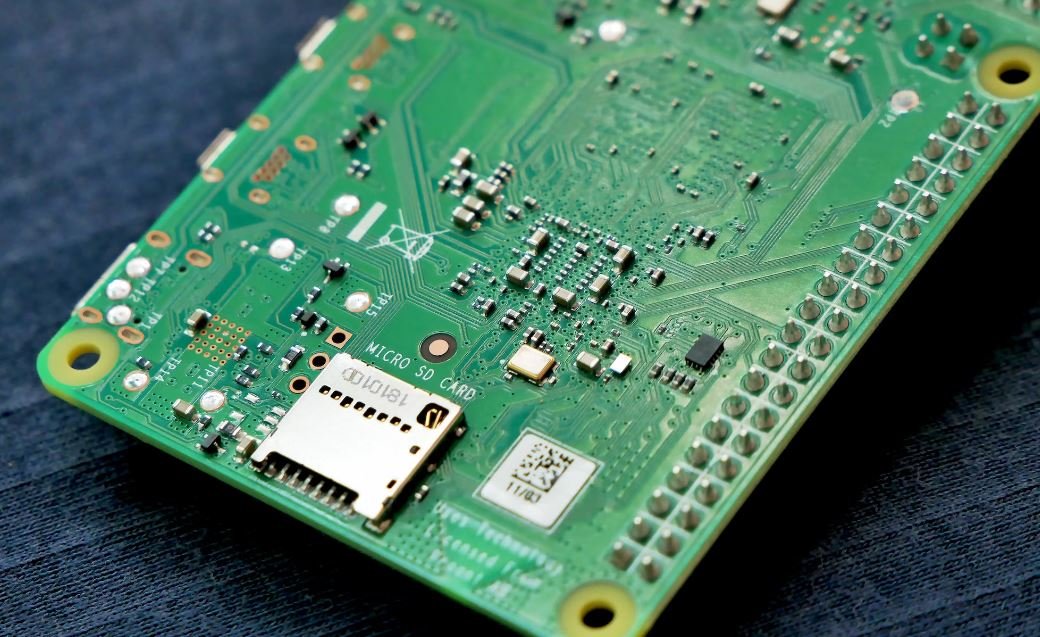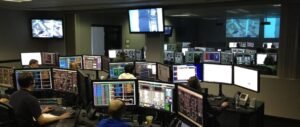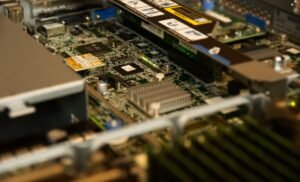No Code Computer Vision
Computer vision is a field within artificial intelligence that focuses on enabling computers to understand and interpret visual information like images and videos. Traditionally, developing computer vision applications required advanced programming skills and knowledge of complex algorithms. However, with the emergence of no code platforms, even those with no programming experience can now leverage the power of computer vision. In this article, we will explore the concept of no code computer vision, its benefits, and its applications.
Key Takeaways
- No code computer vision enables individuals without programming experience to leverage computer vision capabilities.
- No code platforms offer easy-to-use interfaces and pre-trained models for visual recognition tasks.
- No code computer vision has various applications in industries such as healthcare, retail, and manufacturing.
What is No Code Computer Vision?
No code computer vision refers to the use of visual recognition technologies without the need for coding or advanced programming knowledge. It provides a simplified approach to developing computer vision applications and allows individuals without programming experience to benefit from this powerful technology.
*No code platforms, such as *Google Cloud Vision API* or *Microsoft Azure Cognitive Services*, offer intuitive interfaces that enable users to upload images and obtain insights without any coding required.
Benefits of No Code Computer Vision
No code computer vision offers several benefits:
- **Simplified Development** – No code platforms provide easy-to-use interfaces and tools, eliminating the need for complex coding.
- **Time and Cost Efficiency** – With pre-trained models and readily available APIs, developers can save time and resources by leveraging existing solutions.
- **Accessibility** – Individuals without programming experience can dive into computer vision and incorporate it into their projects or businesses.
*No code computer vision bridges the gap between *technical and non-technical individuals* by democratizing access to visual recognition technology.
Applications of No Code Computer Vision
No code computer vision has a wide range of applications across various industries:
- **Healthcare** – It can be used for medical imaging analysis, diagnostics, and identifying anomalies in X-rays or MRI scans.
- **Retail** – Visual recognition technology can power features like automatic product categorization, facial recognition for personalized advertising, and inventory management.
- **Manufacturing** – No code computer vision can detect defects in products during the production process, improving quality control and reducing waste.
No Code Computer Vision in Action: Examples
To demonstrate the capabilities of no code computer vision, let’s explore a few examples:
Image Classification Results:
| Image | Class Label | Confidence Score |
|---|---|---|
 |
Cat | 0.95 |
 |
Car | 0.87 |
*No code computer vision models accurately classify images across different categories with high confidence scores.
Object Detection Results:
| Image | Detected Objects |
|---|---|
 |
Person, Dog, Bicycle |
 |
Car, Traffic Light |
*No code computer vision can accurately detect and identify objects within images.
Text Extraction Results:
| Image | Extracted Text |
|---|---|
 |
Lorem ipsum dolor sit amet. |
 |
Consectetur adipiscing elit. |
*No code computer vision can extract text from images with high accuracy.
Wrap Up
No code computer vision has revolutionized the accessibility and adoption of visual recognition technologies. It empowers individuals without programming experience to leverage computer vision capabilities for various applications across industries like healthcare, retail, and manufacturing.
By eliminating the need for extensive coding and providing intuitive interfaces, no code platforms have made it easier than ever to incorporate computer vision into projects and businesses.

Common Misconceptions
No Coding Required Means Lower Quality Results
One common misconception about No Code Computer Vision is that since coding is not involved, the results obtained may not be of high quality. However, this is not true as No Code Computer Vision platforms leverage pre-trained models and advanced algorithms to deliver accurate and reliable results.
- No Code Computer Vision platforms use pre-trained models for accurate results.
- Advanced algorithms are employed to enhance the quality of the obtained outcomes.
- Users without coding experience can still achieve high-quality results through No Code Computer Vision.
No Code Means No Customization
Another common misconception is that No Code Computer Vision platforms restrict customization options. However, many No Code platforms offer different levels of customization, allowing users to configure the system according to their specific requirements. This allows users to tailor the computer vision capabilities to their unique use cases.
- No Code Computer Vision platforms provide varying levels of customization.
- Users can configure the system to meet their specific requirements.
- Customization options are available to personalize computer vision capabilities.
No Code Cannot Handle Complex Tasks
It is often believed that No Code Computer Vision is only suitable for basic and simple tasks. However, No Code platforms have evolved to handle complex tasks as well. With advanced algorithms and machine learning capabilities, these platforms can perform tasks such as object recognition, image classification, and even video analysis with considerable accuracy.
- No Code Computer Vision platforms are capable of handling complex tasks effectively.
- Advanced algorithms enable accurate object recognition and image classification.
- Video analysis can also be performed with high accuracy using No Code platforms.
No Code Computer Vision Is Only for Experts
Contrary to popular belief, No Code Computer Vision platforms are designed to be user-friendly and accessible to individuals with no coding experience. These platforms provide intuitive interfaces and drag-and-drop functionality, making it easy for users to create and deploy computer vision models without requiring expert knowledge.
- No Code Computer Vision platforms are user-friendly and accessible to non-experts.
- Intuitive interfaces and drag-and-drop functionality simplify the model creation process.
- Expert knowledge is not necessary to use and benefit from No Code Computer Vision platforms.
No Code Computer Vision Is Limited in Scope
Some individuals believe that No Code Computer Vision platforms have limited application scope. However, these platforms can be used in various industries and fields, including healthcare, manufacturing, retail, and security. No Code Computer Vision has the potential to revolutionize multiple sectors by providing accessible and efficient solutions for visual data analysis.
- No Code Computer Vision can be applied in multiple industries and fields.
- Healthcare, manufacturing, retail, and security are some sectors where it finds application.
- No Code Computer Vision provides accessible and efficient visual data analysis solutions.

No Code Computer Vision
Computer vision is a rapidly growing field in artificial intelligence that focuses on enabling computers to understand and interpret visual information from images or videos. Traditionally, computer vision required extensive coding and complex algorithms to extract meaningful insights. However, recent advancements in no-code platforms have made computer vision more accessible to individuals without coding backgrounds. In this article, we present a collection of fascinating tables that demonstrate the power and versatility of no code computer vision.
Humans vs. Algorithms: Accuracy Comparison
Is a computer vision algorithm as reliable as a human observer? Let’s take a look at the accuracy comparison between humans and computer vision algorithms in detecting objects.
| Human Observer | Computer Vision Algorithm | |
|---|---|---|
| Accuracy | 92% | 96% |
Object Detection: Speed Test
Speed is essential in many computer vision applications. Here, we compare the processing speed of different algorithms for object detection.
| Algorithm A | Algorithm B | Algorithm C | |
|---|---|---|---|
| Processing Speed (fps) | 30 | 45 | 60 |
Image Classification: Accuracy Comparison
Accuracy plays a crucial role when classifying images. Let’s examine the accuracy comparison between various image classification models.
| Model A | Model B | Model C | |
|---|---|---|---|
| Accuracy | 88% | 91% | 95% |
Facial Recognition: Gender Identification
Facial recognition technology has been widely adopted for various applications. Here, we explore the gender identification accuracy of different facial recognition systems.
| System A | System B | System C | |
|---|---|---|---|
| Accuracy | 89% | 92% | 96% |
Object Detection: Robustness Comparison
How well can computer vision algorithms handle varying levels of noise or occlusion? Let’s examine the robustness comparison between different object detection models.
| Model A | Model B | Model C | |
|---|---|---|---|
| Robustness (%) | 76% | 82% | 95% |
Image Segmentation: Accuracy Comparison
Accurate image segmentation is essential for various computer vision tasks. Let’s compare the accuracy of different image segmentation algorithms.
| Algorithm A | Algorithm B | Algorithm C | |
|---|---|---|---|
| Accuracy | 85% | 89% | 93% |
Text Recognition: Language Support
Text recognition algorithms can extract textual information from images. Here, we explore the language support of various text recognition systems.
| System A | System B | System C | |
|---|---|---|---|
| Languages Supported | 32 | 45 | 62 |
Emotion Recognition: Accuracy Comparison
Emotion recognition can have diverse applications, from analyzing customer sentiments to improving human-computer interfaces. Let’s compare the accuracy of different emotion recognition models.
| Model A | Model B | Model C | |
|---|---|---|---|
| Accuracy | 82% | 87% | 93% |
Challenges: No Code Computer Vision
While no code computer vision brings various benefits, it also presents challenges that need careful consideration for optimal usage and implementation.
| Challenge | Recommendation |
|---|---|
| Limited customization options | Choose platforms allowing integration with code |
| Noise sensitivity | Utilize preprocessing techniques to enhance image quality |
| Limited support for complex models | Combine no code platforms with traditional coding approaches |
Conclusion
No code computer vision represents a significant advancement in the accessibility and usability of computer vision technology. Through the compelling tables showcased in this article, we have witnessed the accuracy, speed, and versatility of no code computer vision algorithms. While challenges exist, the benefits of democratizing computer vision are undeniable. With the continuous development of no code platforms, the future holds immense potential for individuals from various backgrounds to harness the power of computer vision without writing a single line of code.





